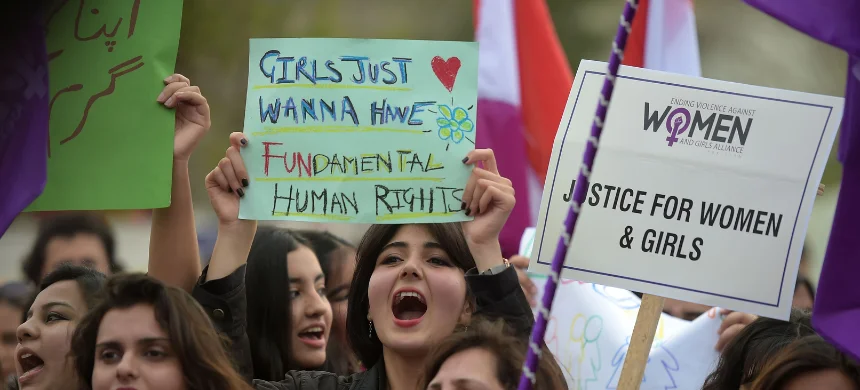The past few months have been particularly distressing for women in Pakistan. The country has witnessed horrific incidents, such as the brutal murder of 27-year-old Noor Muqaddam, who was tortured and beheaded in the capital on July 21. Another troubling case involved Ayesha Ikram, a TikTok creator who was harassed and groped by more than 400 men at Lahore’s Minar-e-Pakistan on Independence Day. These incidents suggest that violence against women may have reached alarming levels.
According to the 2017-2018 Pakistan Demographic and Health Survey, 28 percent of women aged 15 to 49 reported experiencing intimate partner violence in their lifetimes, a slight decrease from 32 percent in the 2012-2013 survey. However, these figures likely underestimate the true extent of domestic violence, which often remains hidden due to secrecy and shame. The perception of increased violence may partly be attributed to greater media coverage and discussions on social media, which have heightened awareness and brought more cases to light.
Read more: Zara Noor Abbas Outraged Over Woman’s Harassment in Karachi: “I Wish I Had the Right to Kill”
The surge in attention to gender-based violence can be seen in the growing number of voices advocating for women’s rights, particularly among educated, urban women. Historical cases, such as the murder of 28-year-old Samia Sarwar in 1999 and the gang-rape of Mukhtaran Mai in 2002, have drawn national and international attention, leading to activism and calls for change. More recently, the murder of 26-year-old Qandeel Baloch in 2016 sparked debates on women’s sexuality and victim-blaming.
The frequency of such cases appears to have increased over the past five years. Social media and increased female education rates have played a role in amplifying these issues. Although only 27.5 percent of Pakistan’s population has internet access, the growth of social media platforms like Twitter has facilitated wider dissemination of information. However, the digital divide remains significant, with a 65 percent gap in digital access between men and women in Pakistan.
Despite the progress, many women, especially those from lower socioeconomic backgrounds and rural areas, remain marginalized in these conversations. For example, the case of a woman in Khaisor, a village in Waziristan, received minimal attention compared to high-profile cases from Punjab. This disparity highlights the ongoing ethnic and class divides in addressing women’s rights issues.
Recent developments, such as the emergence of the Aurat March on International Women’s Day and alternative forums like the Aurat Card YouTube channel, indicate growing resistance against gender-based violence. These efforts, driven largely by educated, urban women, reflect a shift in attitudes, although the struggle for gender equality continues.
Overall, while the battle against gender-based violence is ongoing and faces significant challenges, there are signs of change. Young, educated women are increasingly vocal, and their resistance is gradually challenging the conservative forces that have long dominated discussions on women’s rights. Although it may be too early to call this a gender revolution, the shift in attitudes and the growing activism offer hope for a more equitable future.











